Google Glass: A Curse or a Blessing?
 Yes, Alice, we’ve definitely fallen into the looking glass. Google’s most recent project, Google Glass, will delve far into the realm of science fiction, bringing Tony Stark, Iron Man-esque technology to the masses. The Google Glass project delivers a wearable computer system in the form of glasses, offering hands free messaging, photography, and video recording. Straight out of 007, this offers the ability to share everything you see, live, in real time: directions, reminders, the web – all seen through the lens, right in front of your face.
Yes, Alice, we’ve definitely fallen into the looking glass. Google’s most recent project, Google Glass, will delve far into the realm of science fiction, bringing Tony Stark, Iron Man-esque technology to the masses. The Google Glass project delivers a wearable computer system in the form of glasses, offering hands free messaging, photography, and video recording. Straight out of 007, this offers the ability to share everything you see, live, in real time: directions, reminders, the web – all seen through the lens, right in front of your face.
The glasses have a display in the top right corner of the frame, making endless information available at all times, and will reportedly connect with either your Android or iPhone implementing WiFi, 3g, and 4g coverage. These revolutionary specs won’t just be a piece of spectacular hardware; Google is negotiating with Warby Parker, a company which specializes in the sales of trendy glasses, in an attempt to bring infinite data while still looking fashionable.
The best part of Google’s Project Glass is that Google is currently allowing civilians, not developers, the opportunity to influence product development. Google declared, “We’re looking for bold, creative individuals who want to join us and be a part of shaping the future of Glass.” Applications are being accepted through the use of Google+ and Twitter, through the hashtag #ifihadglass.
While this idea of unlimited data being available even more easily than at your fingertips is revolutionary, it raises more than a few questions regarding privacy. The ability to record everything right in front of you, in real time, is a daunting thought, covering everything from being photographed at a cafe, to making videos in airports. Beyond the questionable “Glass etiquette” that will certainly develop over time, the prospect that Google and the government will be able to access users’ data is shattering.
If the Glass Project brings information right in front of your face, allowing you to communicate, to access the internet, contacts, etc., and share what you are seeing live, what will stop others from accessing your private information? Although a few decades late, Orwell’s 1984 has definitely caught up with us.
The issues that may arise from the mass production of Google Glass are met with equally impressive, revolutionary concepts around social networking and sharing. Glass would be the apex of social sharing, allowing people to be in constant contact, literally letting individuals step into other’s shoes, to view the world from a different point of view. You could be standing in New York’s Time Square and share and trade that experience with someone around the world, exploring the streets of Venice or Sydney, Australia. Such universal sharing would truly redefine the human experience.
At its best, this would also effect topics as broad as human rights and poverty – but the cost remains to be seen. Only time will tell if the Google Glass Project will be the vessel connecting mankind, Pandora’s box, or something in the middle.
Kelli Richards,
CEO of the All Access Group, LLC

 The rise and fall of MySpace has been pretty well documented – twice. In 2006 Google and MySpace reached a blockbuster deal, with MySpace allowing Google to advertise on its site in return for $900 million. The site was quickly bogged down with excessive advertisements, resulting in a slow, seemingly counterintuitive platform. These pitfalls were accentuated by Facebook’s ever-expanding clean and intuitive design. Even to the novice, MySpace was doomed and becoming quickly irrelevant. However, while Facebook has made MySpace an inferior product for almost all players, the latter has continued to provide substantial traffic in a unique niche – for aspiring and acknowledged musicians.
The rise and fall of MySpace has been pretty well documented – twice. In 2006 Google and MySpace reached a blockbuster deal, with MySpace allowing Google to advertise on its site in return for $900 million. The site was quickly bogged down with excessive advertisements, resulting in a slow, seemingly counterintuitive platform. These pitfalls were accentuated by Facebook’s ever-expanding clean and intuitive design. Even to the novice, MySpace was doomed and becoming quickly irrelevant. However, while Facebook has made MySpace an inferior product for almost all players, the latter has continued to provide substantial traffic in a unique niche – for aspiring and acknowledged musicians. “Those who cannot remember the past are condemned to repeat it.” – George Santayana, 1905
“Those who cannot remember the past are condemned to repeat it.” – George Santayana, 1905

